The numbers are in, 90% of Americans don’t meet their daily dietary fiber needs and many are only getting in half the recommended amount. A diet high in fiber has many health benefits but how can you get more fiber into your meals? We’re sharing all the stats and some simple tips for getting that fiber up.
What is Dietary Fiber?
Fiber is the part of certain foods you eat that your body can’t digest or absorb. It’s often referred to as “roughage” and comes from plant based foods (fruits, veggies, nuts, whole grains, seeds, beans).
Instead of being broken down or absorbed in the body, it passes through your intestinal tract and out of your body.
There are 2 main types of dietary fiber –
- Soluble Fiber
- dissolves in water
- found in oats, peas, beans, apples, carrots and barley
- Insoluble Fiber
- doesn’t dissolve in water
- promotes movement of waste throughout the body
- increases stool bulk
- found in whole wheat flour, nuts, beans, vegetables, and bran
Since the two main types are found in a variety of different foods, it’s important to eat a well rounded diet that includes a variety of foods.
The Health Benefits of Fiber

When talking about prevention and what you can do to reduce your risk for certain chronic diseases, fiber is king!
A high fiber diet can boast the following benefits –
Maintain Healthy Bowels
First and foremost, dietary fiber helps keep things moving in the good old intestinal tract. Which can lead to decreased risk for developing hemorrhoids and diverticular conditions. It can also lead to a lower risk of colon cancer.
- Fiber in your diet softens and makes stool bulky, which is easier to pass and reduces the risk of constipation
- Fiber can also absorb water and add bulk to loose stools
According to the American Cancer Society, Colorectal Cancer is the 3rd most common cancer in men and women (excluding skin cancer). While there are many risk factors for developing certain cancers, the American Cancer Society’s Guidelines for Diet include a diet rich in
- “A variety of vegetables – dark green, red and orange, fiber-rich legumes (beans and peas), etc
- Fruits, especially whole fruits, in a variety of colors
- Whole grains”
Decreases Cholesterol

High total cholesterol and elevated LDL cholesterol levels can lead to an increased risk of heart disease and stroke.
Consuming a diet rich in soluble fiber may help reduce LDL cholesterol, which thereby reduces total overall cholesterol levels. Once soluble fiber in ingested into the body, it dissolves into a gel like consistency once it hits water. This gel like fiber moves slowly through the body and is thought to “grab” onto fat and cholesterol in the small intestines that otherwise would be absorbed. It’s then excreted.
Better Blood Sugar Control
Fiber can help those that already have diabetes as well as help people from developing Type 2 diabetes by stabilizing blood sugar levels.
According to the Harvard School of Public Health, fiber helps regulate the the body’s use and absorption of sugars, helping to keep hunger and blood sugars in check.
Decreased Risk for Heart Disease, Stroke and Diabetes
There are certain risk factors (called Metabolic Syndrome) when combined that can lead to an increased risk for cardiovascular disease and diabetes. These risk factors include –
- increased blood pressure
- elevated insulin levels
- increased triglycerides
- low HDL cholesterol (the “good” form)
Fiber can help decrease all of these risk favors when consumed as part of an overall healthy lifestyle.
How Much Fiber Should We Be Eating?
The 2020-2025 Dietary Guidelines for Americans suggest the following daily intake when it comes to dietary fiber –
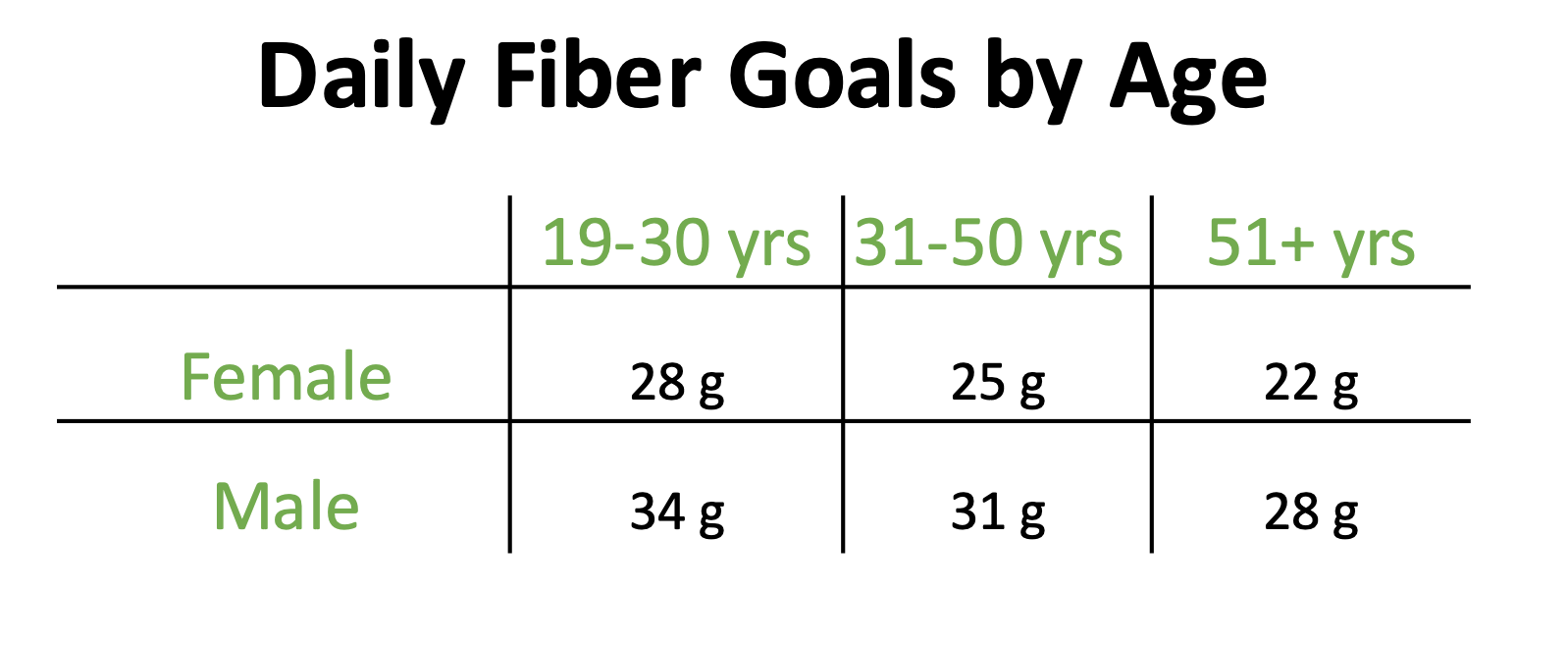
The bigger question might be, how much are we actually eating?
The average intake of fiber is currently only about 15 grams, which is about half the recommended amount.
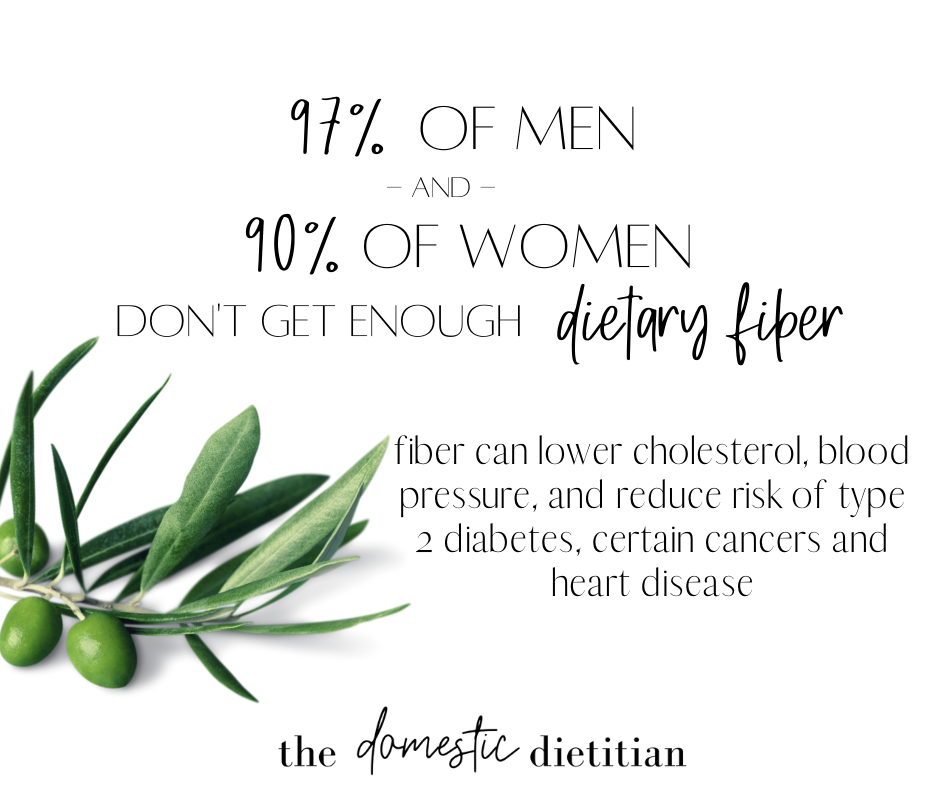
High Dietary Fiber Foods
So now that we know we probably aren’t getting enough fiber in our daily meals, let’s talk about what we can do to fix that.
Typical Food Groups that Contain Fiber include –
- Whole Grains
- Fruits
- Vegetables
- Beans and Legumes
- Nuts and Seeds
Sound familiar? These are the main focus of the Mediterranean Diet Food Guide Pyramid. Since the Mediterranean diet is a plant based diet, that means it’s also high in dietary fiber.
If you’re still confused by the term “Plant Based”, don’t worry, we’ve got it all covered with “What Exactly Does Eating a Plant Based Diet Mean“.
High Fiber Choices by Category
The USDA has a great, detailed list of the fiber content of many foods. Some of the highest fiber choices in each food group include –
Grains
- High Fiber Cereal (1/2 cup) = 8-14 grams
- Spaghetti, whole wheat (1 cup) = 6 grams
- Quinoa, cooked (1 cup) = 5 grams
- Bulgur, Cooked (1/2 cup) = 4.1 grams
- Brown Rice (1 cup) = 3.5 grams
- Oat Bran (1/2 cup) = 2.9 grams
- Tortillas, whole wheat (1 oz) = 2.8 grams
- Bread, whole wheat (1 slice) = 1.9 grams
Vegetables
- Artichoke, cooked (1 cup) = 9.6 grams
- Pumpkin, canned (1 cup) = 7.1 grams
- Brussels sprouts, cooked (1 cup) = 6.4 grams
- Sweet Potato, cooked (1 cup) = 6.3 grams
- Broccoli, cooked (1 cup0 = 5.2 grams
- Avocado (1/2 cup) = 5 grams
- Collard Greens, cooked (1 cup) = 4.8 grams
- Spinach, cooked (1 cup) = 4.3 grams
- Carrots, raw (1 cup) = 3.6 grams
Fruits
- Guava (1 cup) = 8.9 grams
- Raspberries (1 cup) = 8 grams
- Blackberries (1 cup) = 7.6 grams
- Asian Pear (1 medium) = 6.5 grams
- Blueberries (1 cup) = 6.2 grams
- Grapefruit (1) = 5 grams
- Apple, with skin (1 medium) = 4.8 grams
- Orange (1 medium) = 3.7 grams
Beans, Peas and Legumes
- Navy Beans, cooked (1/2 cup) = 9.6 grams
- Lima Beans, cooked (1 cup) = 9.2 grams
- Split Peas, cooked (1/2 cup) = 8.2 grams
- Lentils, cooked (1/2 cup) = 7.8 grams
- Pinto Beans, cooked (1/2 cup) = 7.7 grams
- Black Beans, cooked (1/2 cup) = 7.5 grams
- Chickpeas, cooked (1/2 cup) = 6.3 grams
- Black-eyed peas, cooked (1/2 cup) = 5.6 grams
- Soybeans, cooked (1/2 cup) = 5.2 grams
Nuts and Seeds
- Pumpkin Seeds (1oz) = 5.2 grams
- Chia Seeds (1 tbsp) = 4.1 grams
- Almonds (1oz) = 3.5 grams
- Sunflower Seeds (1oz) = 3.1 grams
- Pistachios (1oz) = 2.9 grams
- Flaxseed (1tbsp) = 2.8 grams
Tips for Increasing Fiber in the Diet
So how can you increase the fiber in your meals to meet your recommended requirement?
Let’s start by giving our #1 tip for adding fiber to your diet = START SLOWLY!
As you increase your fiber intake, you also need to increase your water intake. Otherwise, you can really experience gas, bloating and abdominal pain. So slow is the way to go.
Some simple swaps you can make for increasing fiber in your diet –
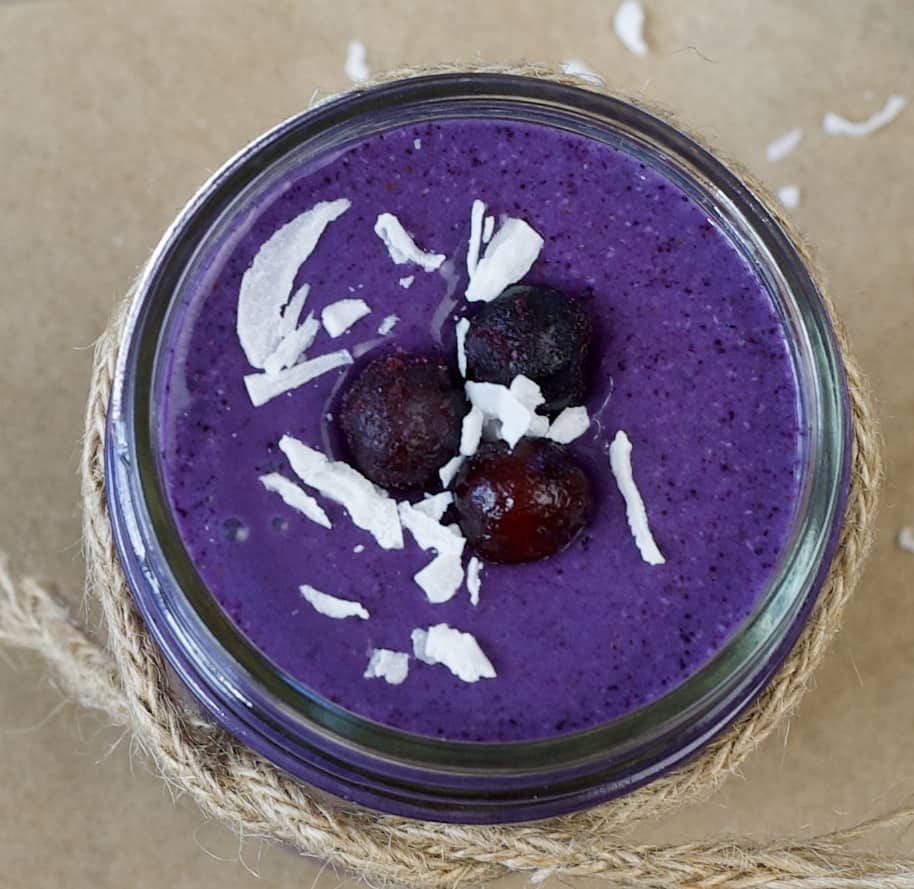
- Use frozen berries to make a fiber filled smoothie that you can take on the go
- We also love adding Memore, a nutritional powder that provides an entire serving of dark, leafy greens and 6 grams of fiber per serving. They use real ingredients designed to fill in nutritional gaps and improve brain function.
- We are partners with Memore and if you use the code “domesticdietitian” you can receive 30% off your order! Please note we may make a small commission off orders placed using the following link.
- Click here to find out more – https://memore.sjv.io/NK65yP
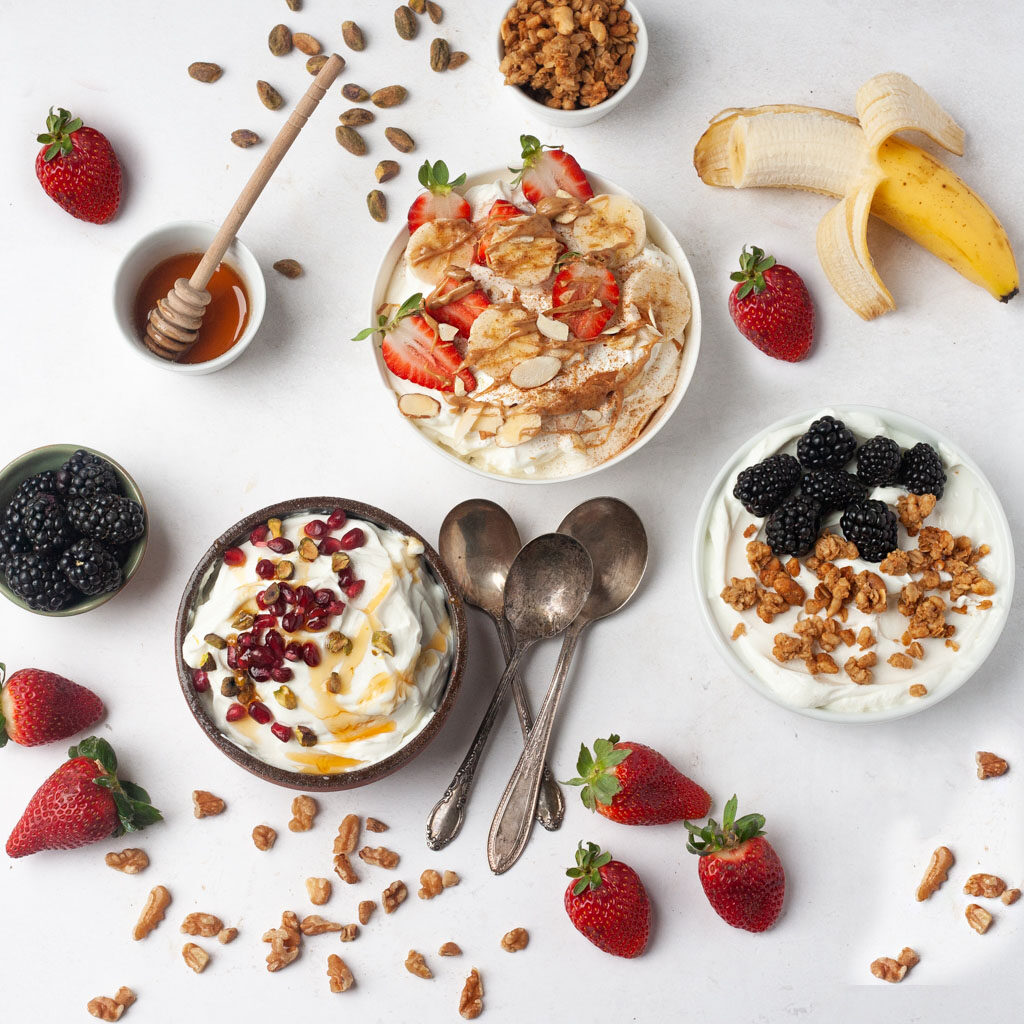
- Switch to a high fiber breakfast cereal
- aim for 5 or more grams per serving, but be sure to watch out for added sugars
- consider increasing the fiber content of your favorite cereal by adding flaxseed, nuts, or chia seeds
- Replace refined grains with whole grain versions
- spaghetti/pasta, bread, rice and crackers all come with great tasting whole wheat versions that have much more fiber than their counterparts
- Add beans and lentils to meals
- This Ridiculously Easy Meatless Chili recipe uses 3 entire cans of beans to make…talk about fiber filled!
- Add garbanzo beans or white beans to salads
- Find a lentil recipe and try working into meals, read more about Why We Love Lentils and You Should Too
- Make a batch of minestrone soup with kidney beans for an extra dose of fiber
- Need more ideas, check out 25 Recipes Using Beans & Lentils
- Choose the whole fruit instead of juice
- The process of making juice in most cases removes the fiber from the fruit. An orange has 3.7 grams of fruit but a glass of orange juice has 0 grams
- Find a way to include more nuts and seeds into meals
- Making a Homemade Trail Mix filled with your favorite nuts, seeds and dried fruit is an easy way to create a fiber filled snack
- Hummus, made from chickpeas, makes a great sandwich spread or fiber containing dip for veggies
- Add a sprinkle of pumpkin seeds to salads, pistachios to your cheese board, or pine nuts to your pasta
What about Fiber Supplements?
Our motto is always to try and get as much as you can from real food.
Fiber Supplements may provide one type of specific fiber, but real food provides a variety of fiber, vitamins, nutrients and minerals instead of just one specific thing.

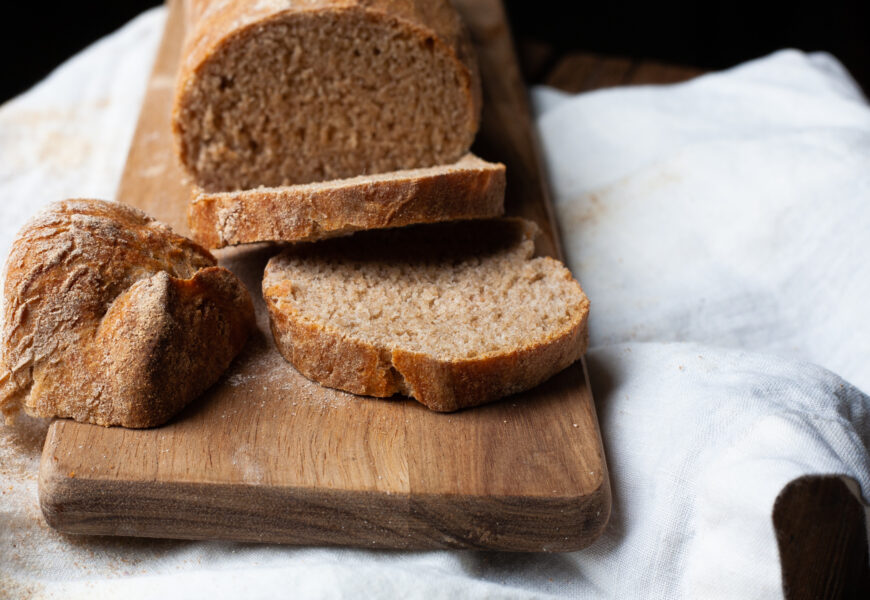
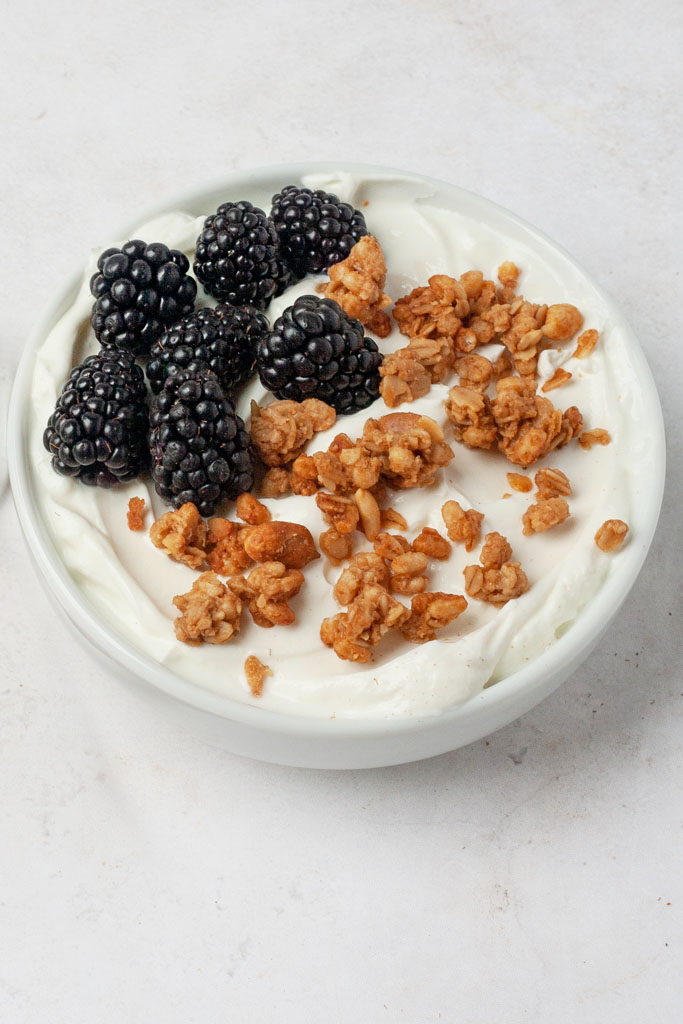
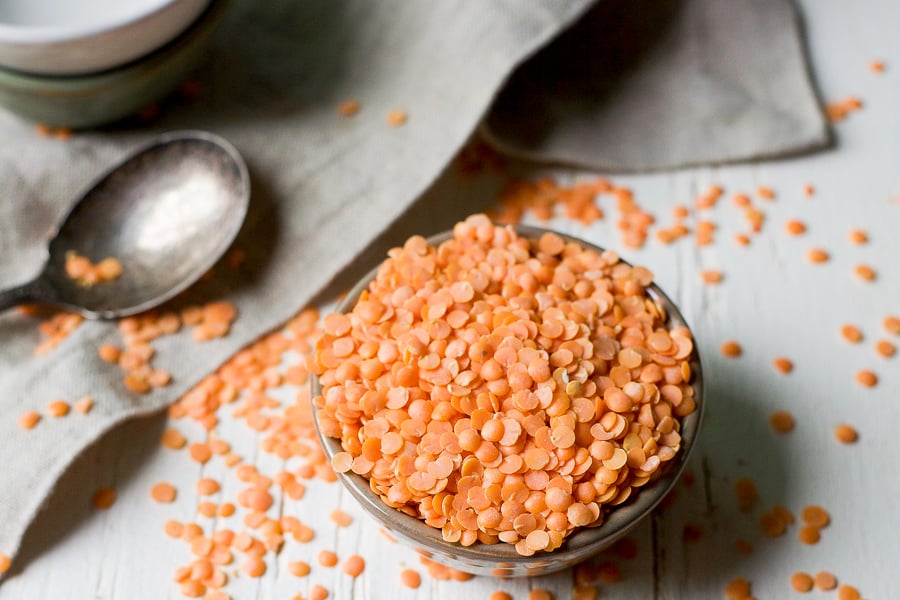
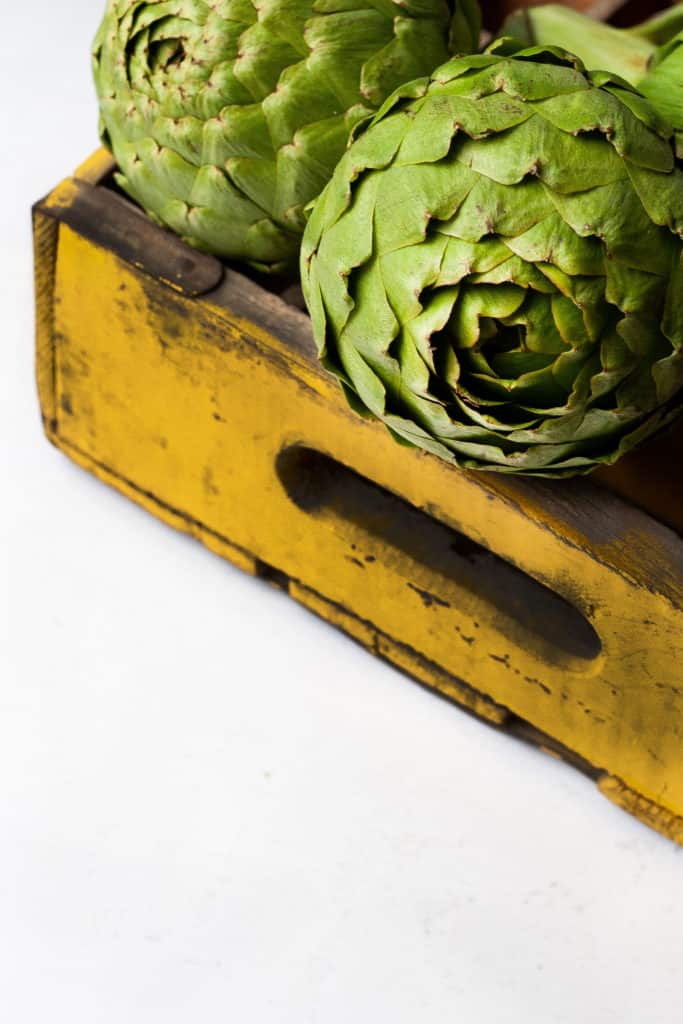
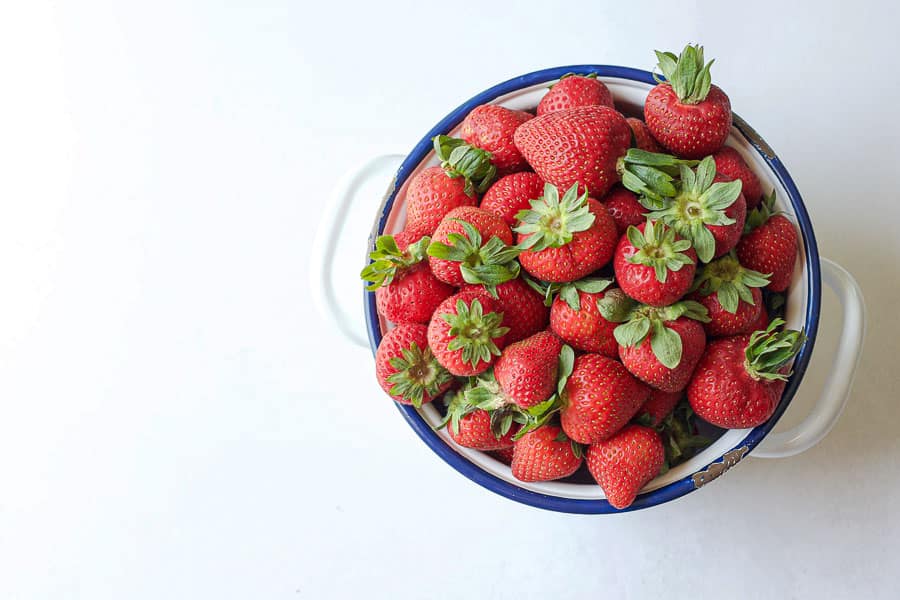
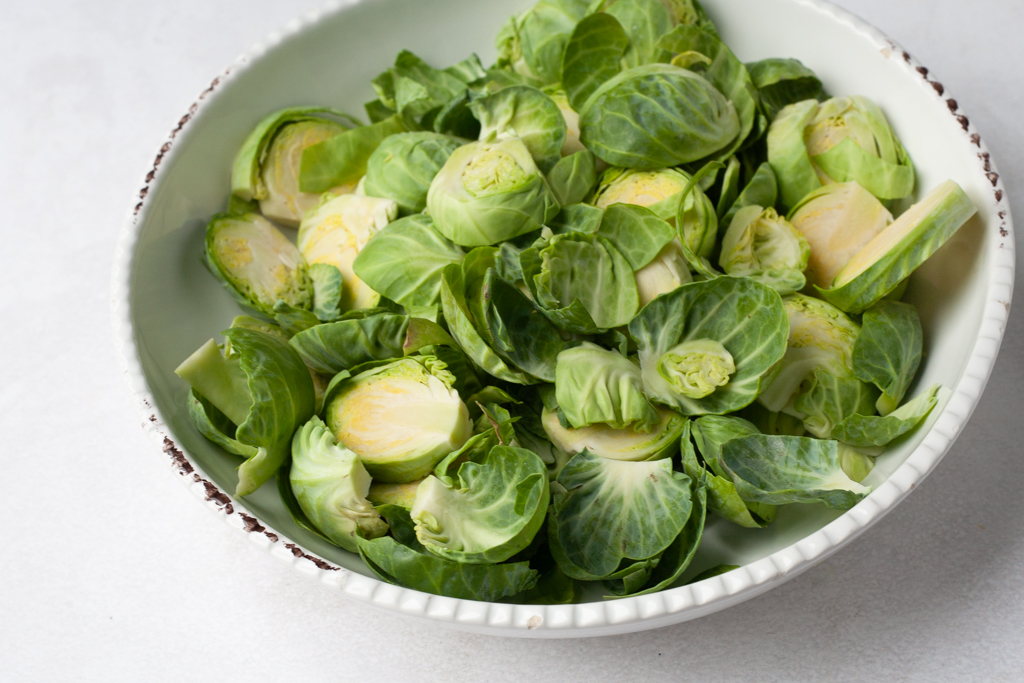
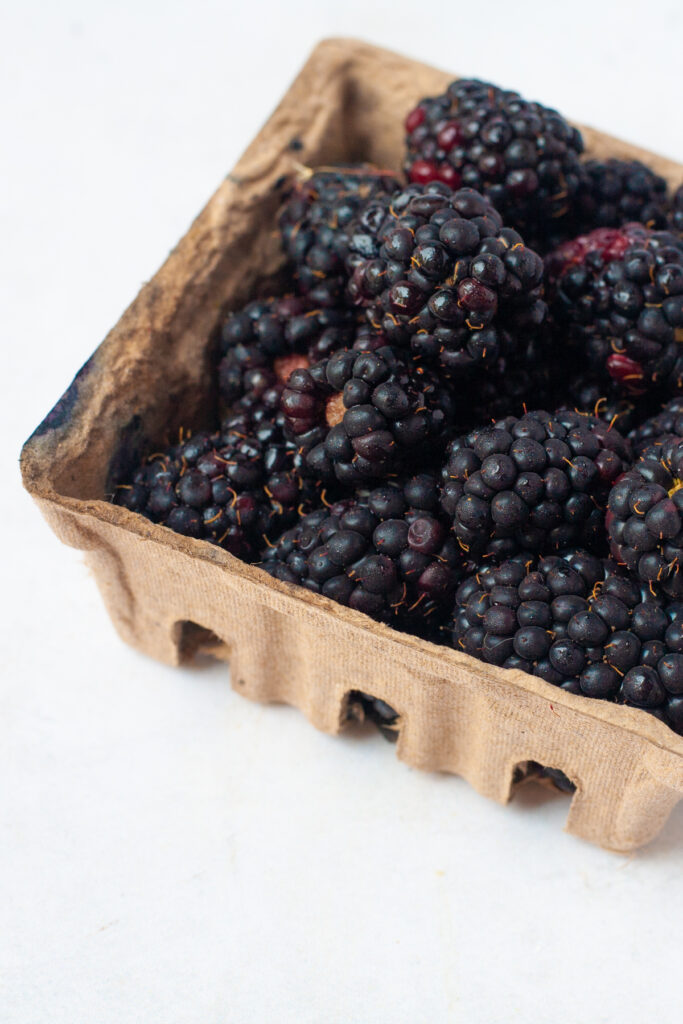

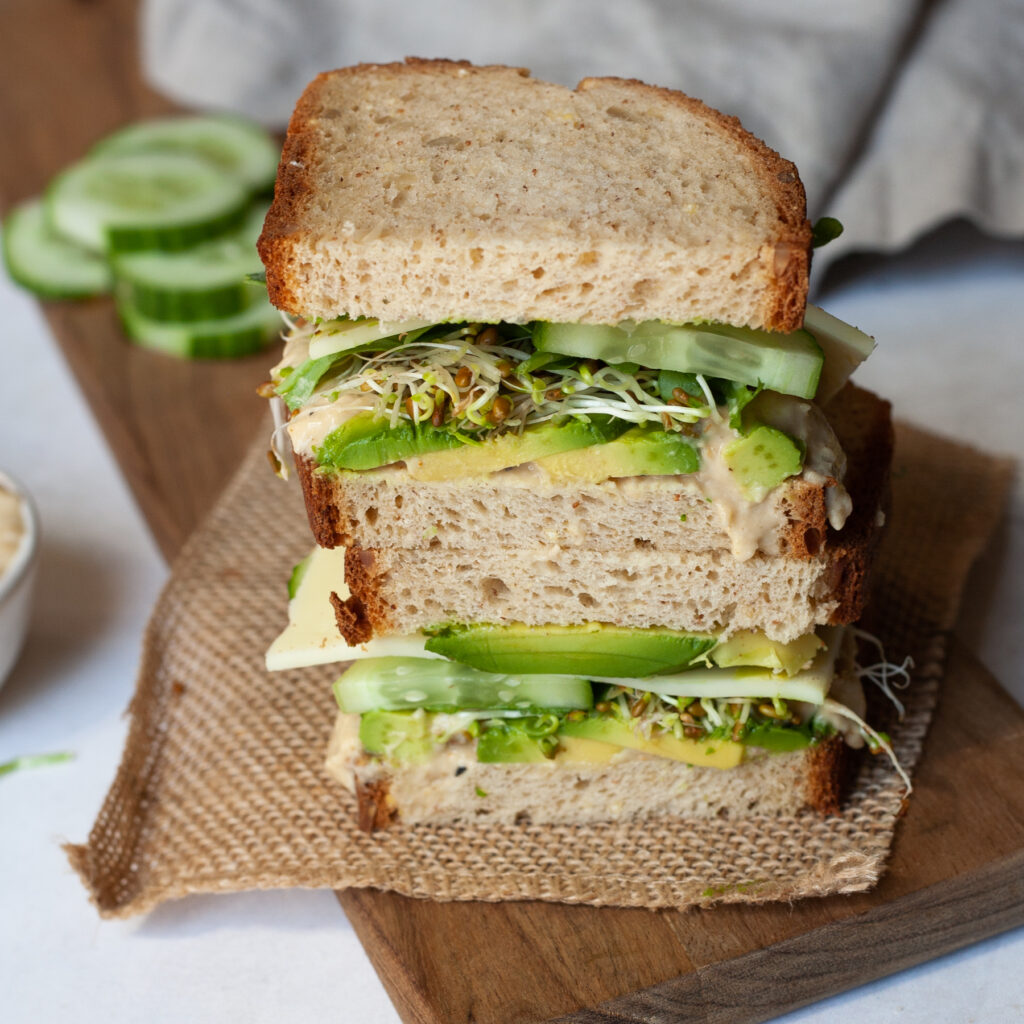
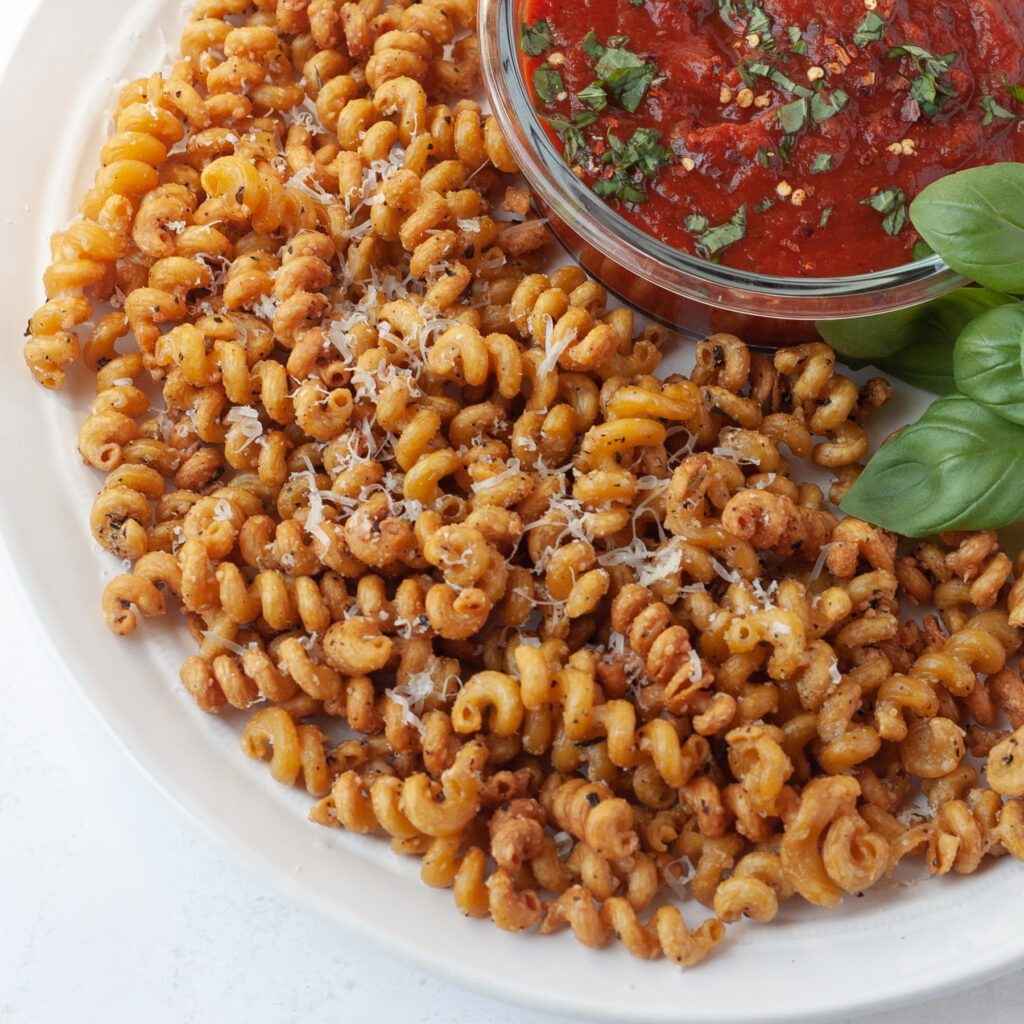
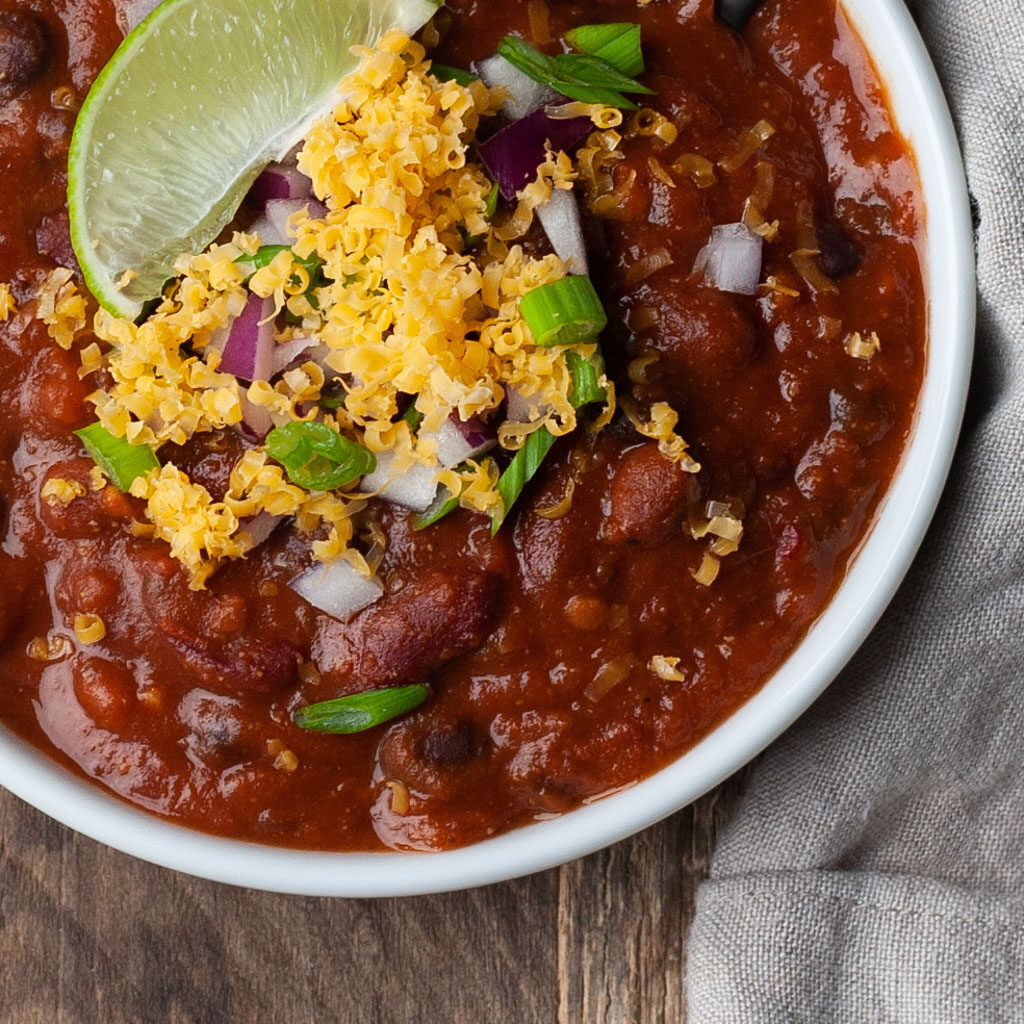
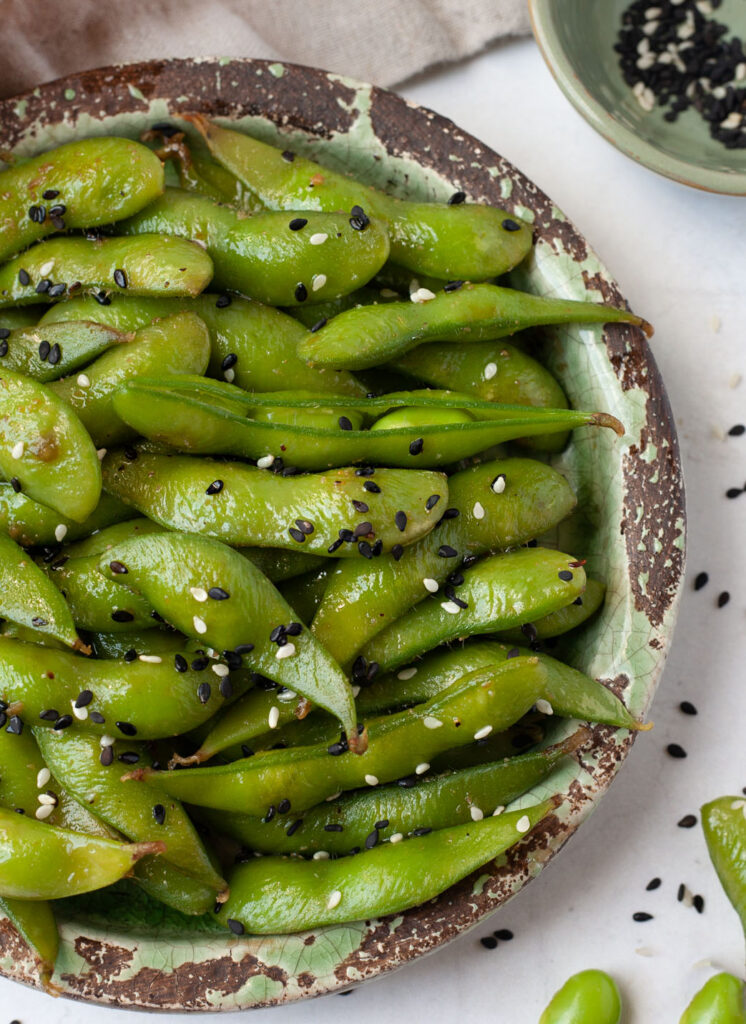



[…] get anywhere near their recommended amount of dietary fiber? Check out this post for more info – The #1 Thing Missing from your Diet, Dietary Fiber […]
[…] writing this post – The #1 Thing Missing from your Diet , I’ve wanted to create more resources to help people find ways to add more fiber too their […]
[…] know we love talking about Dietary Fiber and dates are a good source. Just two dates contain 3 grams of […]
[…] realize we love speaking about Dietary Fiber and dates are a very good supply. Simply two dates include 3 grams of […]
[…] diet, beans and lentils are a great addition to many meals and recipes. Not only are they full of dietary fiber, but a great plant based source of protein as […]
[…] Learn the way a lot dietary fiber you want in your food plan right here – Dietary Fiber, the #1 Thing Missing from Our Diet. […]
[…] Discover out why dietary fiber is so essential right here – The #1 Thing Missing from Your Diet […]
[…] discussed before how Dietary Fiber is the #1 thing Missing from your Diet. Incorporating more dietary fiber into meals can help with the following […]
[…] discussed before how Dietary Fiber is the #1 thing Missing from your Diet. Incorporating more dietary fiber into meals can help with the following […]